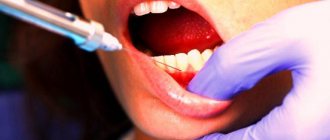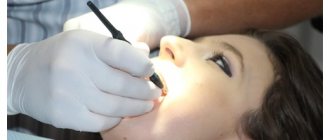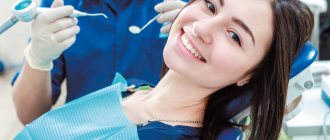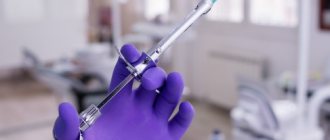Expecting a baby is one of the most wonderful periods in a woman’s life. Her thoughts are focused on dreams of the future baby and joyful worries about children's things, a stroller, and toys. But changes in the body sometimes prepare unpleasant surprises for the expectant mother. Thus, many women feel dryness, itching and burning in the intimate area during pregnancy. What caused them?
What should an effective disinfectant contain?
Today there are two types of antiseptics that work well against germs, bacteria, and viruses.
The first type is alcohol-based liquids; it should contain at least 60%, preferably more. If the content is less, then the protein shell of microbes and viruses will not be destroyed and some of them will remain invulnerable. The alcohol must be ethyl or isopropyl.
The second type of antiseptic is based on chlorhexidine. It does not erode longer, provides longer-lasting protection, but damages the skin of your hands. However, alcohol also dries the skin, so such liquids usually contain softeners.
How to rinse your nose?
To alleviate the condition, it is necessary to clean the nasal cavity. This is rinsing the nasal cavity with an isotonic solution. It can be prepared at home.
“For a liter of warm boiled water, a teaspoon of table salt.”
For rinsing at home, you can use a 20 gram syringe. The most important thing is that when we introduce liquid into the nasal cavity while blowing your nose as you exhale, do not cover the blowing side of the nasal cavity. That is, do not increase the pressure in the nasal cavity.
When you blow your nose incorrectly, there is a high chance of infection getting through the auditory tube into the middle ear area and otitis media occurs.
Through the anastomosis from the nasal cavity, an infection can enter the paranasal sinuses and sinusitis occurs - this is, first of all, sinusitis and frontal sinusitis.
How to protect the skin of your hands after using an antiseptic?
High-quality formulations already include various softeners, moisturizers, glycerin, and vitamins that reduce the effect of alcohol and chlorhexidine on the skin. However, sometimes this is not enough, especially with frequent use of solutions. To prevent irritation, redness, and allergic reactions, do not use too hot water for washing, use cream soap instead of regular soap, drink more water (7-8 glasses a day). If cracks and wounds appear, buy special ointments, do not delay treatment.
Tips for intimate hygiene for an expectant mother
Burning and itching in the intimate area during pregnancy can be prevented. Here are 6 simple tips to help reduce your risk of developing infections:
- Take a shower no more than 2 times a day. Water and soap remove natural protection - beneficial microbes.
- Choose intimate hygiene gels containing lactic acid or plant extracts: linden, chamomile, blue lotus, white tea. These natural components have a positive effect on the condition of the most delicate area of our body.
- Dry your body thoroughly after intimate toilet with a cotton towel. Do not share a towel with other family members.
- Wear panties made of 100% cotton, which help your skin breathe and do not create a greenhouse effect, especially in hot weather.
- Use pads filled with cotton extract. They allow oxygen to pass through well, which destroys yeast.
- Replace the bath with a shower. Hot, soapy water can bring dirt into the body and wash away beneficial bacteria. If you really want to soak in the bath, wash yourself in the shower first. Use sea salt instead of foam.
Is it possible to drink antiseptic?
No you can not. Unfortunately, some people use antiseptics internally due to the presence of alcohol in the composition. The result of such use is burnt internal organs, severe poisoning, and this is at best; at worst, the person dies. For the production of antiseptics, two types of alcohol are used - ethanol and isopropyl. The second is cheaper, is not suitable for the production of alcohol-containing drinks due to toxicity and is not suitable for drinking, but due to its low price it is most often used in the manufacture of sanitizers.
Instructions
Before you start using Chlorhexidine, you must carefully read the instructions, especially the section on use during pregnancy.
The annotation for the medication states that treatment with this drug while the baby is waiting is allowed only in situations where the risk to the mother exceeds the possible risk to the child.
Do not be afraid of such words, because this is a standard phrase warning that you need to consult a doctor regarding the advisability of using Chlorhexidine, and not self-medicate.
In addition, not a single drug is tested on pregnant women, so it is impossible to say with complete confidence about the absolute safety of the substance.
The most common liquid form of the drug, however, there are vaginal suppositories containing the substance chlorhexidine, which can be used during pregnancy to treat gynecological infectious and inflammatory diseases.
Instructions for use of Chlorhexidine:
- Oral baths for diseases of the oral cavity . Place 20 ml of Chlorhexidine in your mouth and hold for 30-60 seconds, then spit out the solution and do not rinse your mouth with water. It is important to observe the time the liquid remains in the mouth so that a protective membrane on the mucous membrane has time to form.
- Throat treatment . Before the procedure, rinse the oropharynx with water. Take a ready-made 0.05% solution of Chlorhexidine, do not dilute it with water, take a tablespoon of liquid and gargle thoroughly for a minute. After the manipulation, it is not recommended to eat for about an hour.
- Vaginal douching . To perform the hygienic procedure, a woman needs to sit in a bathtub or on a couch, insert the tip of the bottle into the vagina and irrigate it, and then try to hold the solution for several minutes.
Can alcohol be used as an antiseptic?
In its pure form, we do not recommend using alcohol as an antiseptic. In sanitizers, the amount of ethyl ranges from 60 to 80%; they are no longer used. The alcohol strength is 96%, meaning this concentration will almost certainly cause skin problems, especially with repeated use. In addition, even the simplest sanitizer contains auxiliary substances - glycerin, hydrogen peroxide and others. They not only perform antiviral functions, but also serve as softeners, humidifiers, etc. Thus, using alcohol carries the risk of burns, irritation, and other problems.
By the way, you cannot use vodka either, it is ineffective, since its strength is only 40%, which will not kill viruses.
What diseases of the intimate area can occur during pregnancy?
Often, during pregnancy, the expectant mother is bothered by irritating discharge with an unpleasant odor, itching, and dryness. The cause may be one of the following infections:
- thrush.
Its appearance is caused by the proliferation of yeast fungi on the mucous membrane of the intimate area. The infection can be transmitted to the child during childbirth, affecting the mucous membranes of the mouth and genitals; - bacterial vaginosis.
Caused by pathogenic bacteria and manifests itself in the form of gray discharge with an unpleasant odor; - urinary tract infections
. Hostile microorganisms penetrate the urinary organs when urinating from the intimate area. Cutting and burning are the first signs of this condition. This does not harm the baby, but can lead to kidney inflammation, which is dangerous for the expectant mother.
If you see a doctor in time and undergo the necessary treatment, you can avoid dangerous complications.
What else can you use to rinse your nose?
In no case - only an isotonic solution. Everything that we add additionally, either garlic juice or some herbal decoctions, are allergens of plant origin. And we can cause or provoke an allergic reaction.
Another thing is some kind of antiseptics, then yes. Antiseptics that can be added to the rinsing solution - for example, elemental Chlorhexidine or Miramistin. These drugs can even be diluted one to one.
But this is when we talk about bacterial rhinitis. And in our case, acute viral rhinitis occurs against the background of ARVI. But then, in the event of some unfavorable factors, let’s say a decrease in immune status, some kind of air pollution, a secondary bacterial infection very often occurs. And gradually viral rhinitis (viral infection) is replaced by a bacterial form.
Filmed specifically for the educational project “Dispensary” profilaktorium.ru
How to use the solution for a runny nose
Chlorhexidine is used to rinse the nasal passages. The product is not used for instillation, due to the low effectiveness of the procedure. In addition, if you drip the drug, it will enter the stomach, which can provoke intoxication of the body and even anaphylactic shock. For this reason, the antiseptic is recommended to be used only for rinsing the sinuses. The exception is a weakly concentrated solution that can be used for instillation into the sinuses of children.
To use the product you will need a special device. It could be:
- special kettle;
- plastic bottle and dispenser;
- syringe;
- syringe.
Using the device, the nasal passages are washed, due to which the mucous membranes are freed from harmful microorganisms and the inflammatory process.
What you need for the rinsing procedure
To rinse your nose correctly, you need to prepare certain devices. Everything you need is freely available on pharmacy counters.
For processing, you will need a syringe without a needle (5 ml is enough) or a syringe bulb (no more than 50 ml). It is convenient to use Chlorhexidine solution with a special “neti pot” washing device made of ceramic or plastic. The choice of equipment depends on preference.
Chlorhexidine is collected in a container and rinsing begins. It is advisable to do this in the bathroom, or above the basin. The person leans forward 45 degrees, his head is turned slightly to the side. Mouth breathing is smooth and constant. The contents of the container are slowly poured into one nostril. With the correct position of the body, the liquid will pass through the nasal passage and pour out through the second nostril or mouth. There should be no discomfort, burning or itching. Daily rinsing of the sinuses helps to quickly get rid of the infection. Eliminates runny nose, improves overall health.
—>
Pediatricians do not recommend clearing the nose of infants with antiseptic. Young children have narrow airways. Under high pressure, Chlorhexidine can get into the child’s ears, thereby triggering the development of otitis media. In this case, self-medication is completely contraindicated. Any actions must be agreed with the attending physician, and therapy is carried out only under the supervision of a specialist.
- How to gargle with Chlorhexidine for adults, children and pregnant women?
Children over 6 years old wash their noses like adults. To prepare the child physically and psychologically, doctors recommend that parents show the procedure by example.
Indications and contraindications for use
Chlorhexidine is indicated for use in the following cases:
- rhinitis (acute or chronic);
- runny nose, which arose against the background of complications of pathologies provoked by the activity of harmful microorganisms;
- sinusitis - in this case the drug is prescribed together with other medications;
- an inflammatory process occurring in the paranasal sinuses, accompanied by purulent formations (purulent sinusitis);
- preparation for examination of the nasal sinuses using an endoscope;
- prevention of colds;
- the presence of purulent formations in the nose - boils;
- preparation for surgery.
Read more about the treatment of purulent rhinitis in this article.
The drug has the following contraindications:
- swelling of the mucous membranes of the sinuses;
- children under 7 years of age, since the main active component of the product can injure unformed and unprotected mucous membranes of the nasal passages;
- subjective intolerance to the main active component of the antiseptic;
- increased sensitivity of mucous membranes;
- curvature of the nasal septum, since in this case the procedure will not give the desired effect.
Read about the causes and treatment of yellow snot in adults here.
A deviated nasal septum can provoke the development of hay fever and allergies.










